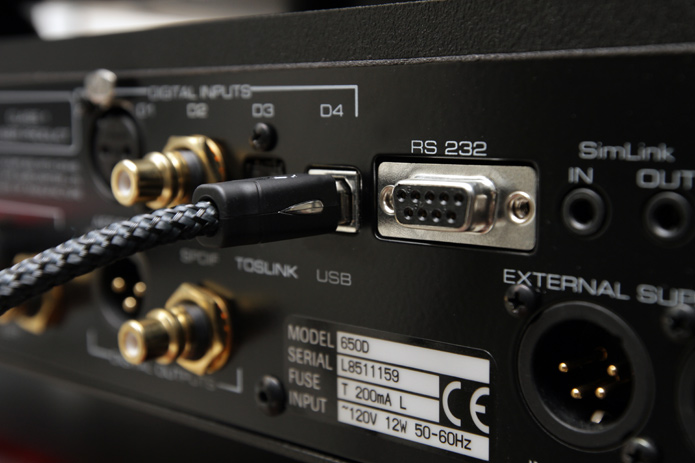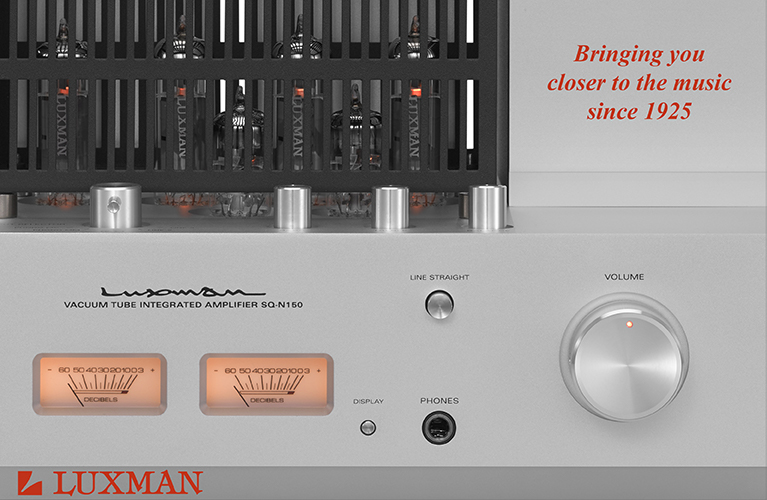 Digital-to-analog converters (DACs) that can be connected directly to computers are now ubiquitous. Most of these are connected using the USB interface, and many support high-resolution audio (bit depths above 16 and sample rates above 48 kilohertz). That does not make them all the same. Differences in their architectures can affect the digital data even before it gets to the DAC chip. This article will explain some of the transfer methods and how they differ.
Digital-to-analog converters (DACs) that can be connected directly to computers are now ubiquitous. Most of these are connected using the USB interface, and many support high-resolution audio (bit depths above 16 and sample rates above 48 kilohertz). That does not make them all the same. Differences in their architectures can affect the digital data even before it gets to the DAC chip. This article will explain some of the transfer methods and how they differ.
There are two components to a digital audio datastream: the bit values themselves, and where they occur with respect to time. It is obvious that alterations in the value of the bits will distort the signal, but alterations in the timing have an effect just as deleterious. This can be summarized as: “The right value at the wrong time is just as wrong as the wrong value at the right time.” Achieving bit-perfect output -- i.e., the bit values coming out of the computer are the same as those stored in the digital file -- is important, but not difficult. A number of different programs for both the Windows and Mac operating systems have been thoroughly tested and shown not to alter the data. At least one company, Weiss Engineering, even provides a feature in their products to test whether the rest of the system is delivering bit-perfect data to the DAC. Just like systems based on optical transports, many computer systems have trouble maintaining the proper timing for the data -- and that is where we will focus our attention.
Unlike the S/PDIF or AES protocols, the USB audio interface does not send a constant stream of data. Instead, it sends audio data in 1-millisecond bursts, called frames. Aside from the audio data themselves, each frame contains codes that specify the data’s sample rate. However, most computers and operating systems are not designed to process data in real time. Although these frames are sent roughly each millisecond, the exact timing between the bursts depends on the computer’s clock, and the load on the computer’s CPU and USB bus at any particular time.
Most USB DACs run in adaptive mode, of which there are two flavors. In the simpler implementation, the computer sends the audio frames at a more or less constant rate and they are read into a buffer, usually on the receiver chip. The receiver calculates the data rate over several bursts and adjusts the timing of the buffer’s output so that it doesn’t overflow or run out. Over a number of bursts, the sample rate will average out to the required 44.1 kilohertz, 48 kilohertz, or higher. Since the DAC has no control over the rate at which the computer sends the data, its clock is slaved to the timing of the buffer’s output. A phase-locked loop (PLL) keeps the DAC’s clock synchronized to the computer’s clock. The implementation of the PLL determines to what extent the DAC is subject to jitter on the incoming datastream.
Some USB-connected DACs run in what is called adaptive asynchronous mode. This method of operation is very similar to the regular adaptive mode, except that the input stream is converted to a different sample rate using a separate and independent clock. The clocks are not synchronized to each other -- hence the name asynchronous. Adaptive asynchronous sample-rate converters have their own inherent problems with adding timing distortion to the digital signal. Properly implemented, they can filter out a significant amount of jitter from the incoming datastream but not eliminate it entirely. The reduction in jitter is traded for the timing distortion arising from the two different clocks. How successful this approach is varies widely from implementation to implementation.

The third option for a USB audio transfer method is called asynchronous mode. It is important to note that asynchronous mode and adaptive asynchronous mode are not at all the same. True asynchronous mode is a bidirectional communication scheme wherein the DAC requests audio frames from the computer and stores them in a buffer. The DAC takes the data from the buffer using a first in, first out (FIFO) logic, and controls the timing using its own clock. The timing of the signal is, therefore, completely independent of the computer, and should not be affected by any of its jittery processes. This method seems much more straightforward than either the adaptive or adaptive asynchronous mode, but it is much harder to implement. There are no off-the-shelf chips with the required functionality, so companies must develop their own or license it from some other company. The use of asynchronous mode has been limited to only a very few high-end companies, but its prevalence is expanding.
Some manufacturers are also experimenting with using adaptive mode to get the audio data from the computer to the DAC, but then storing the data in an independent buffer and reclocking it. This method should be very similar to the true asynchronous mode in that timing should be determined entirely by the DAC’s own clock.
Not all DACs that run in asynchronous mode will have equally good jitter performance. While this implementation should not be affected by jitter in the upstream components, the accurate timing of the audio data depends on the quality of the DAC’s clock. If that clock is jittery, the output will be jittery, no matter what USB transfer mode is used. The best true-asynchronous DACs have jitter so low as to be immeasurable.
There is a reason I have been saying “should not” rather than “is not” affected by timing uncertainties further up the signal chain. In theory, so long as the proper bits make it to the buffer -- something that is easily verifiable -- they lose all of their history. Many audiophiles, however, report hearing differences when changing upstream components -- e.g., cables, computers, or playback software -- even when using DACs that operate in true asynchronous mode. Might they be fooling themselves? That’s always a possibility, but the weight of accumulating evidence makes it unlikely. When sufficient observational evidence continues to defy theory, it’s time to throw out, or at least modify, the theory. That is the spirit of science.
When considering the purchase of a USB DAC, it is important to keep the various transfer methods in mind. Not all companies clearly state how their devices operate, and some even try to deliberately mislead consumers. There can be significant differences in audible and measured performance even among designs that use the same basic architecture. Ultimately, what matters is what comes out of the DAC at the end, not how it got to be that way. We recommend trusting your ears (and some measurements) rather than clinging dogmatically to any particular theory.
. . . S. Andrea Sundaram
andreas@soundstagenetwork.com






















